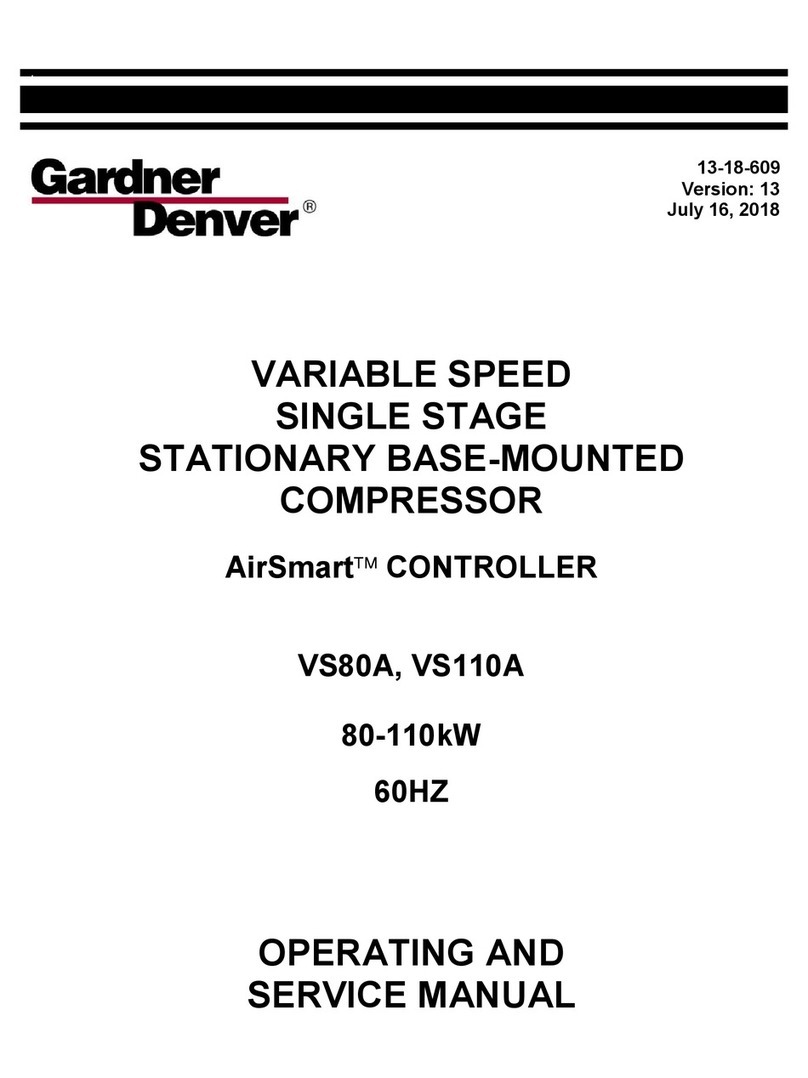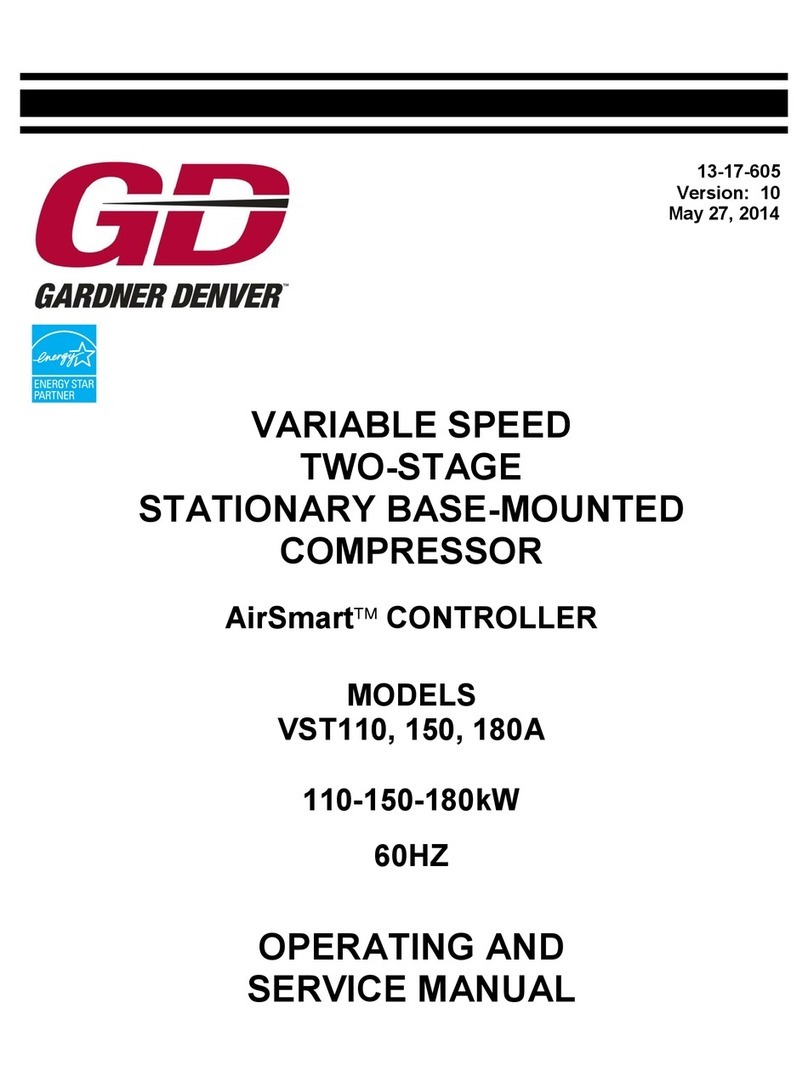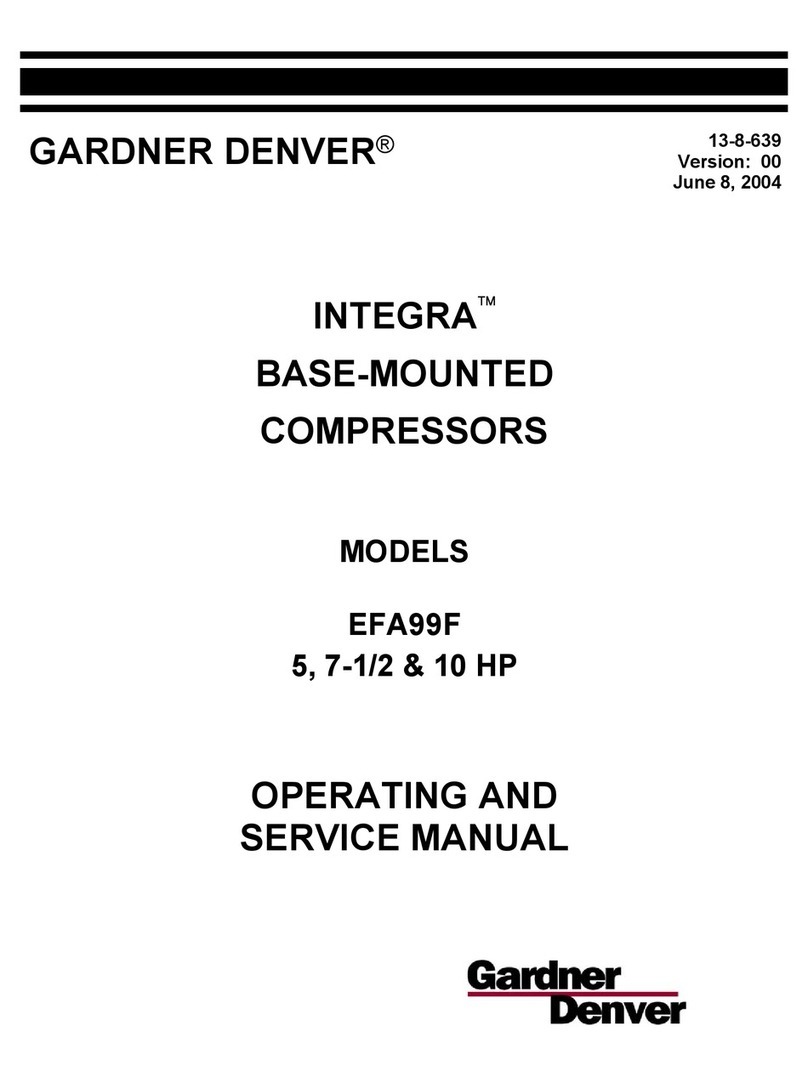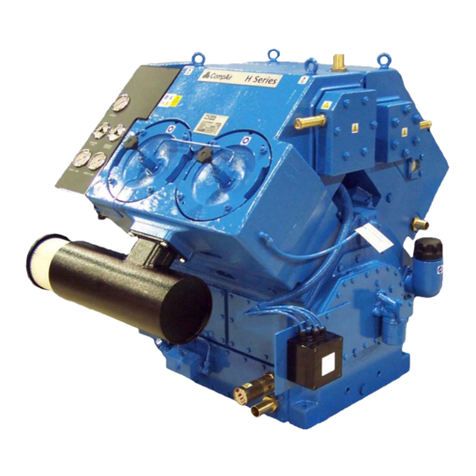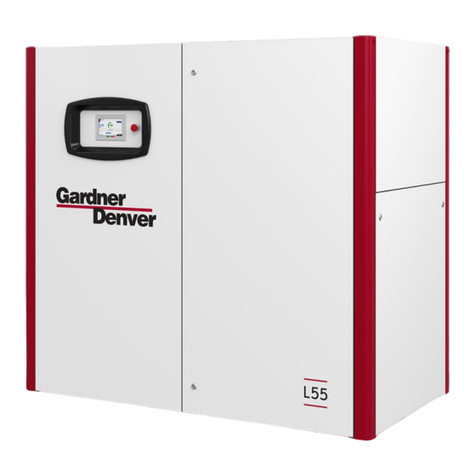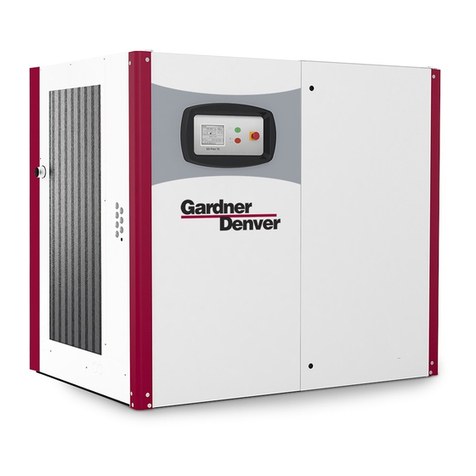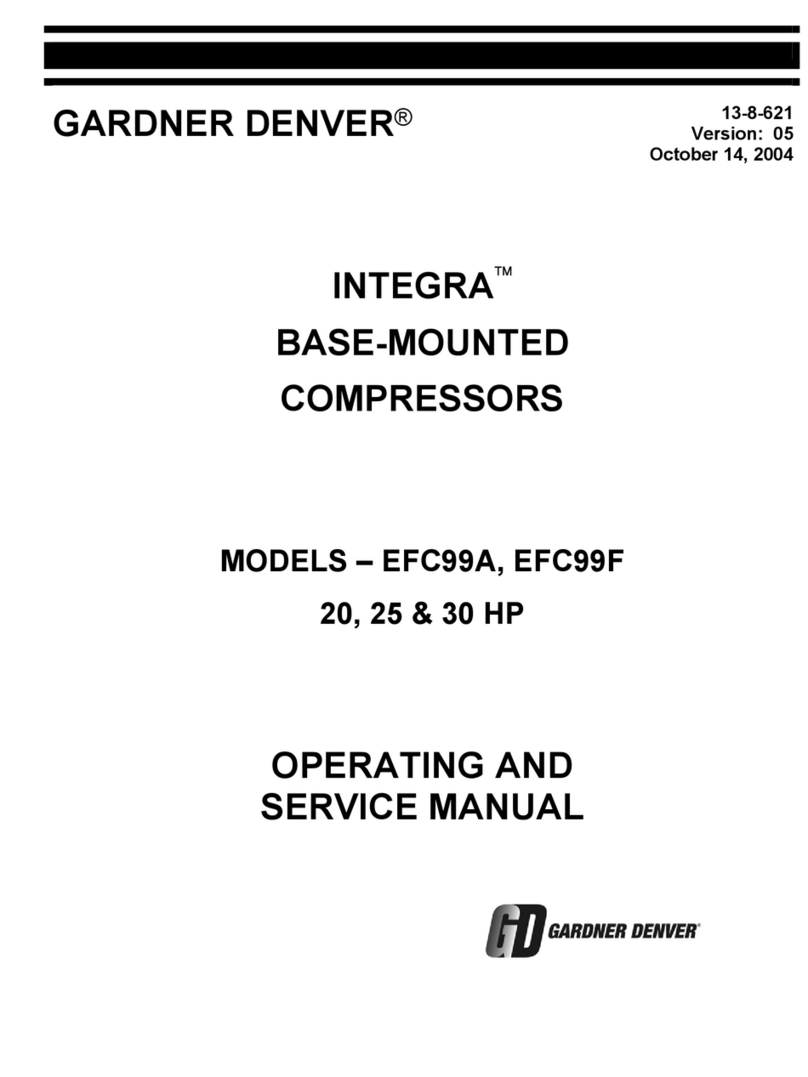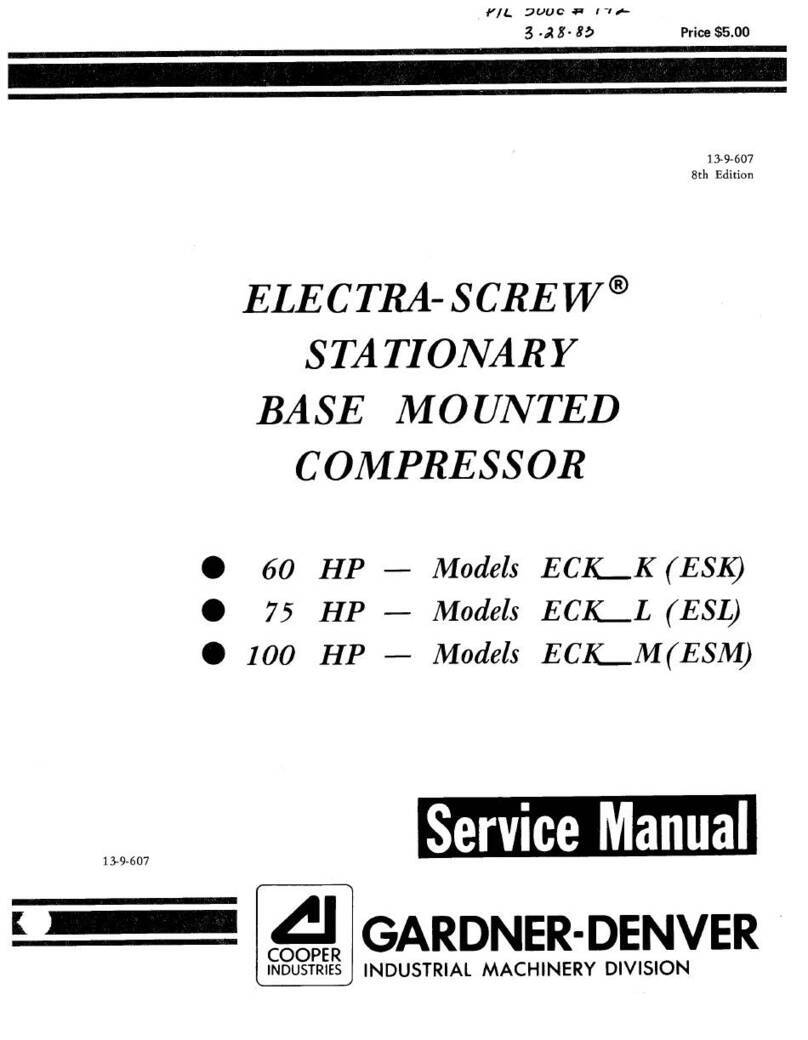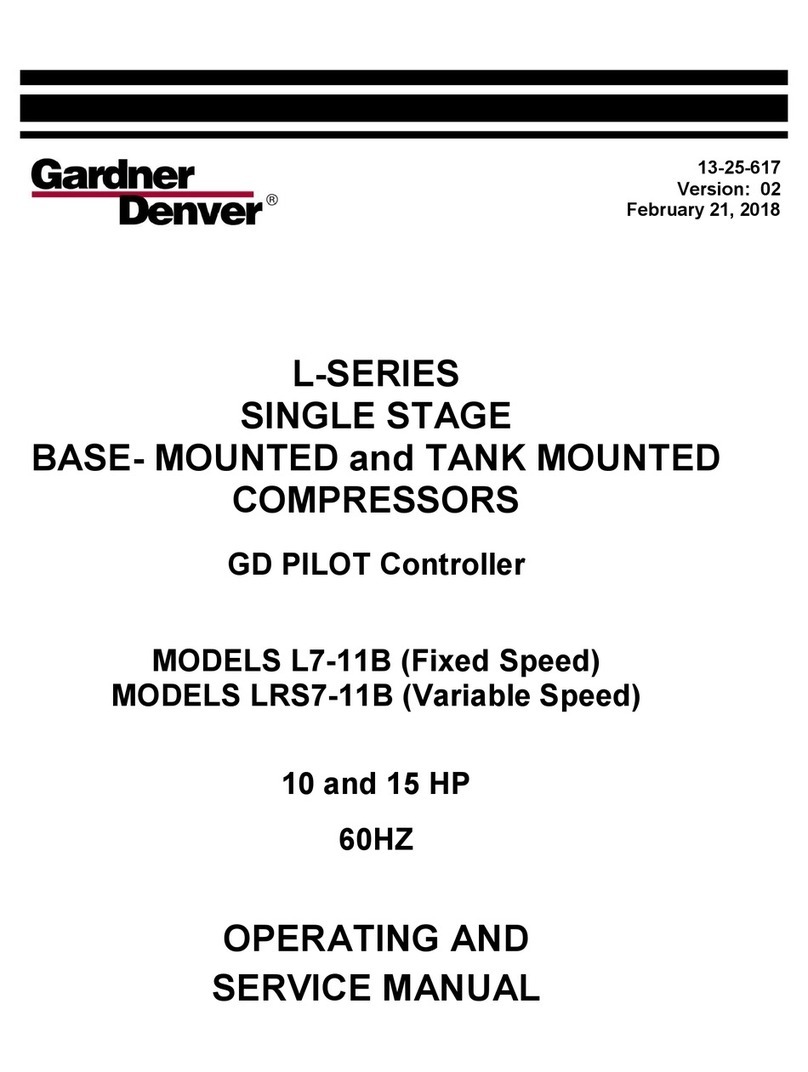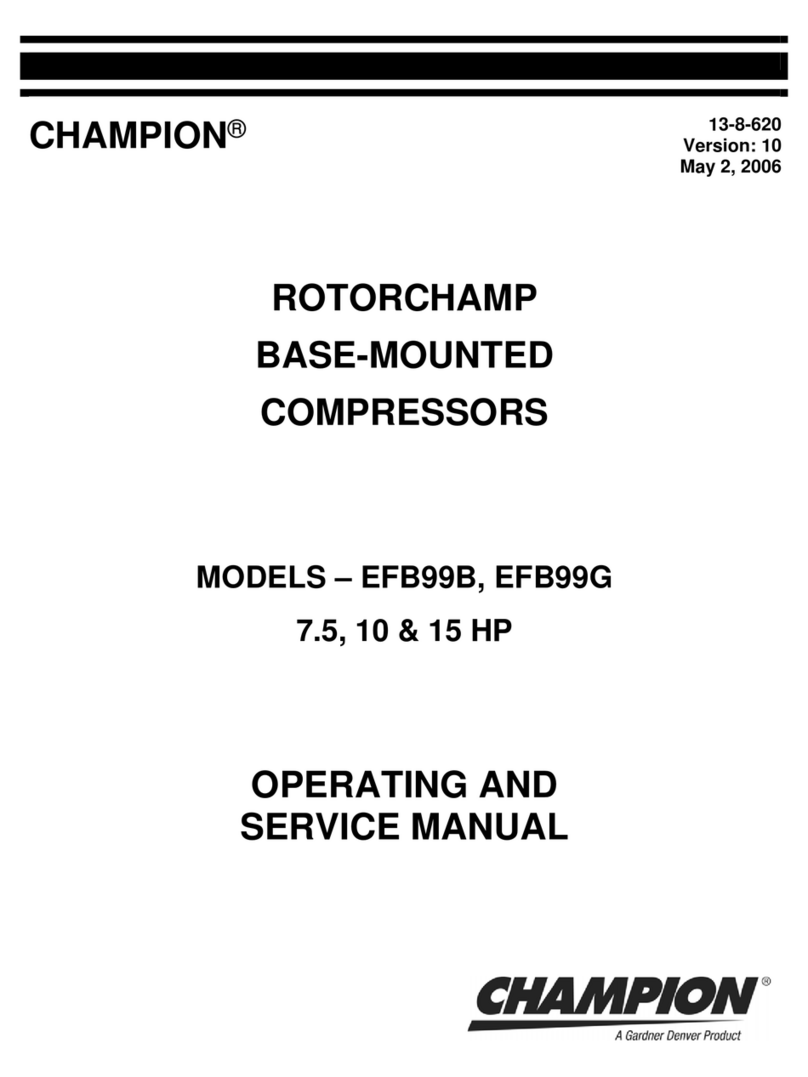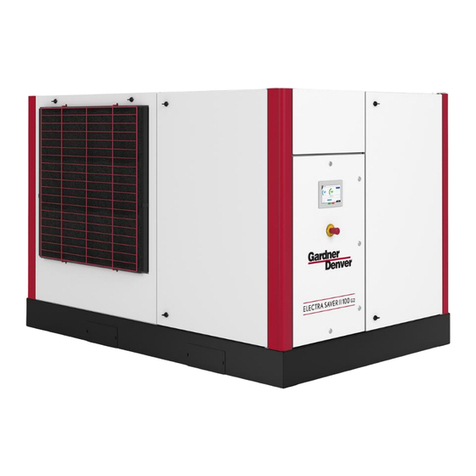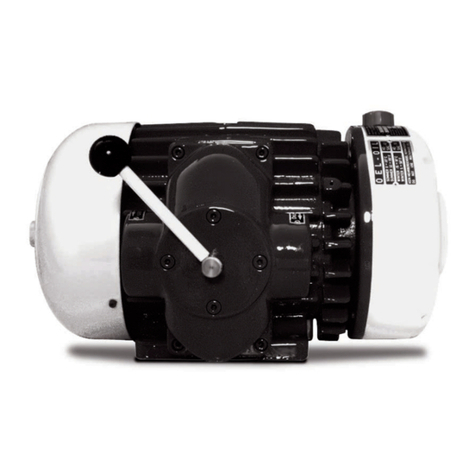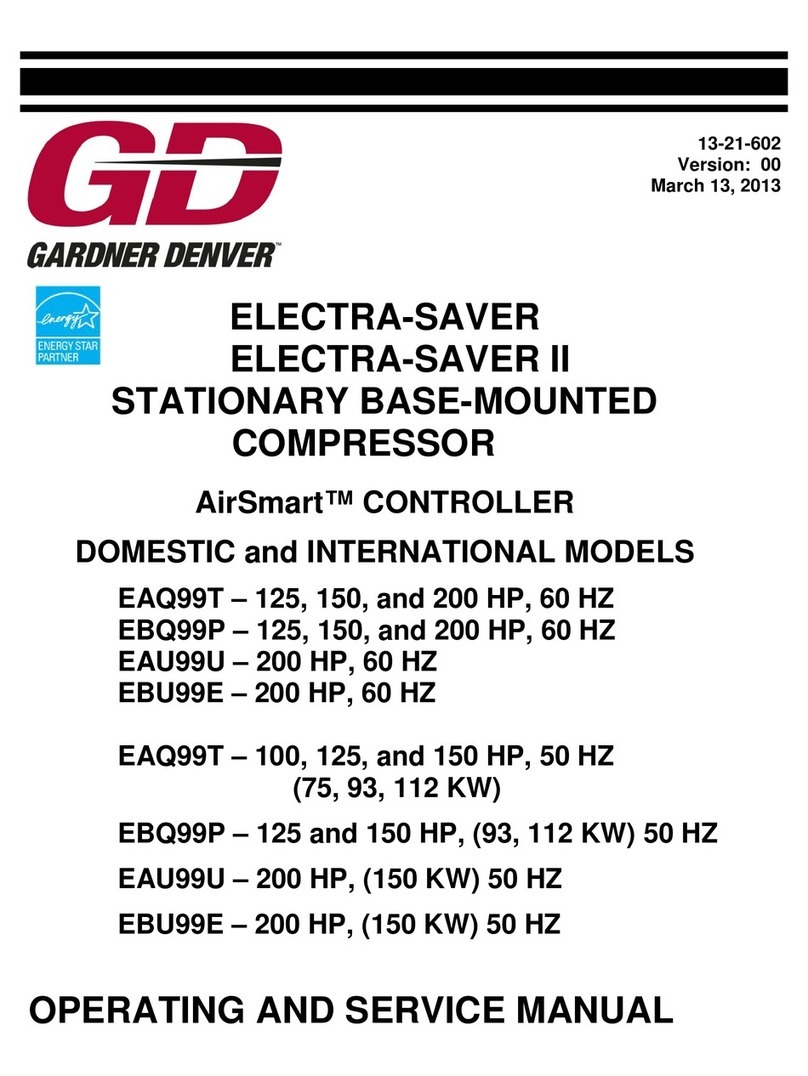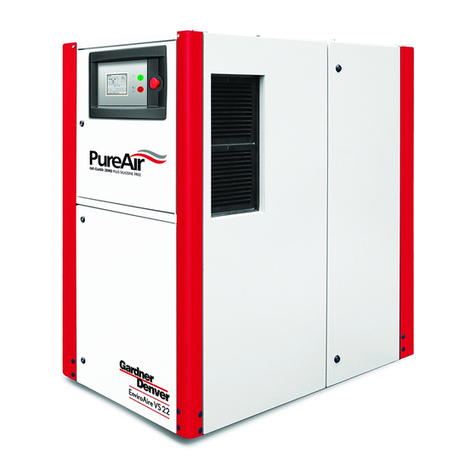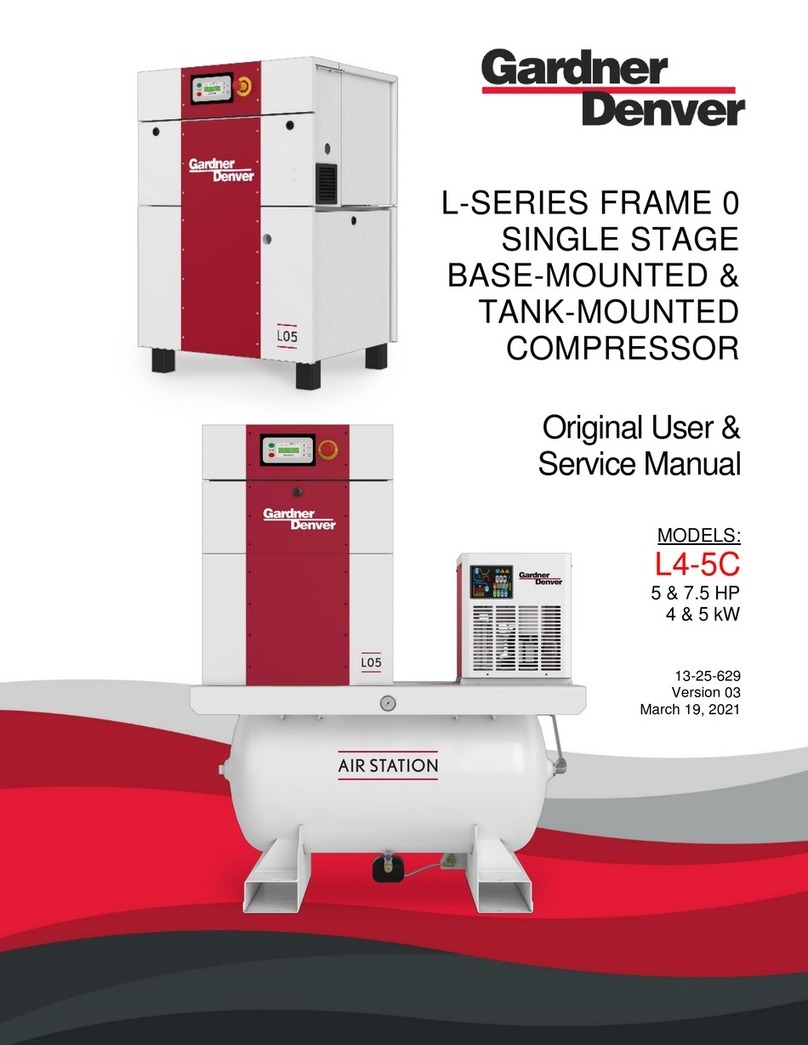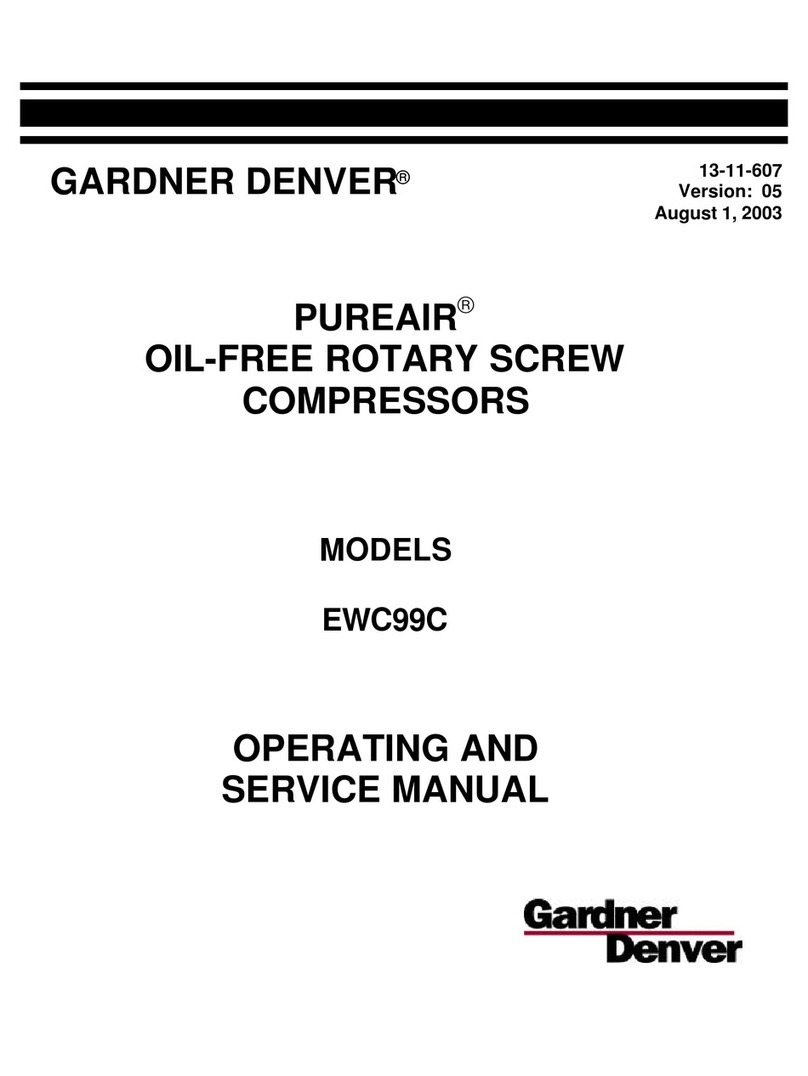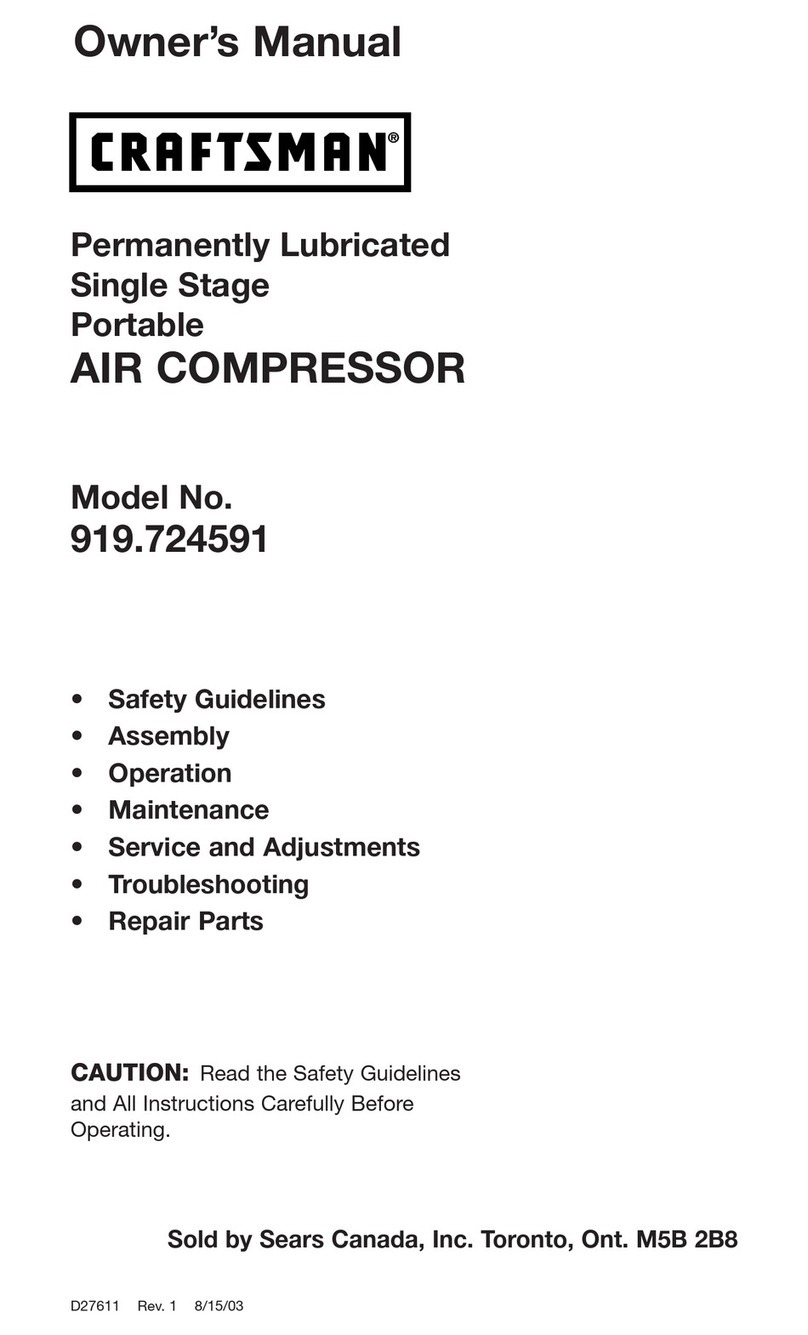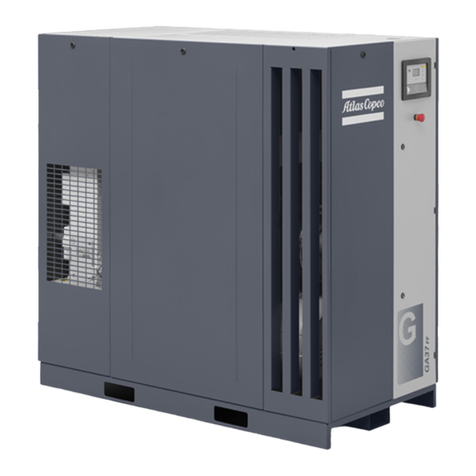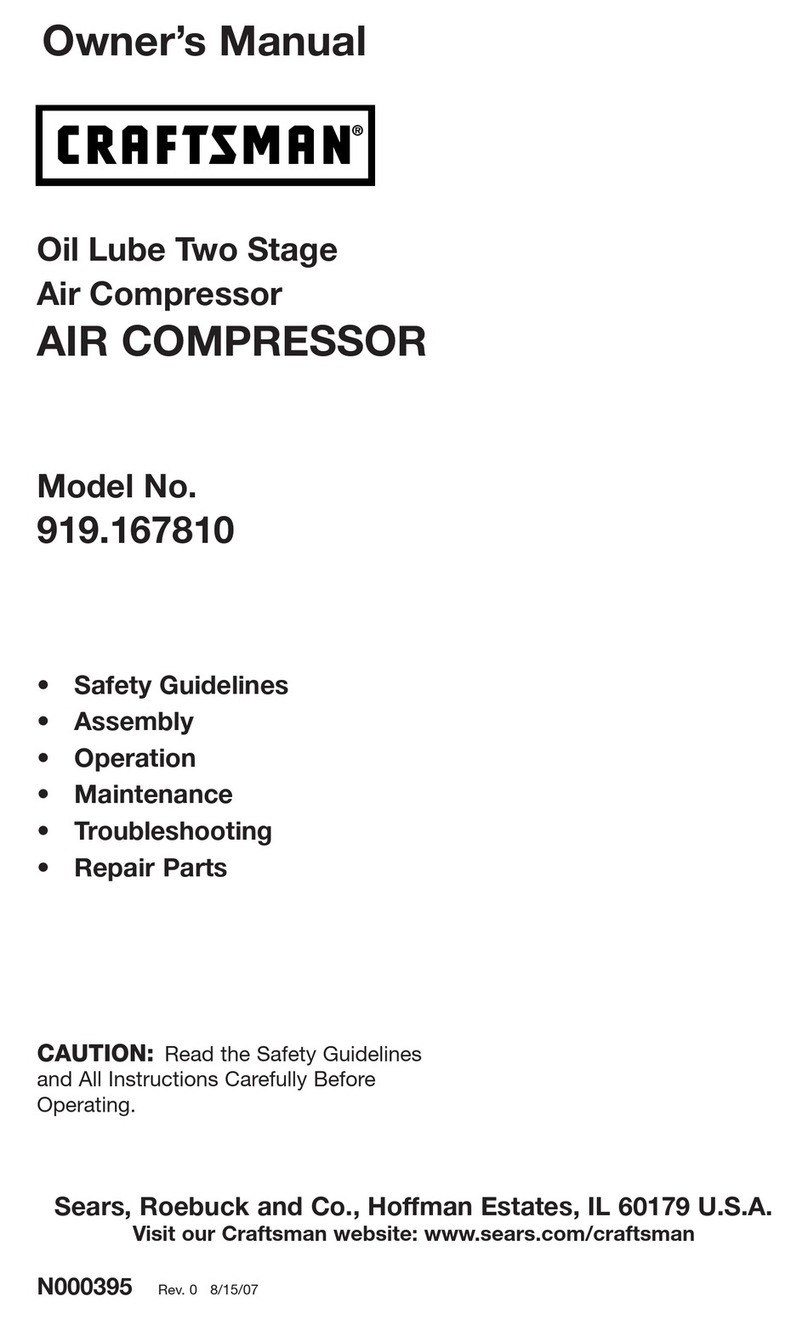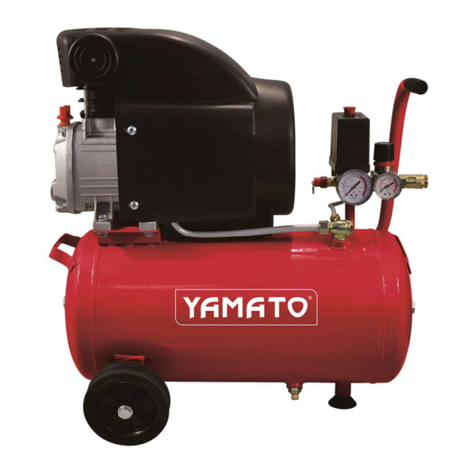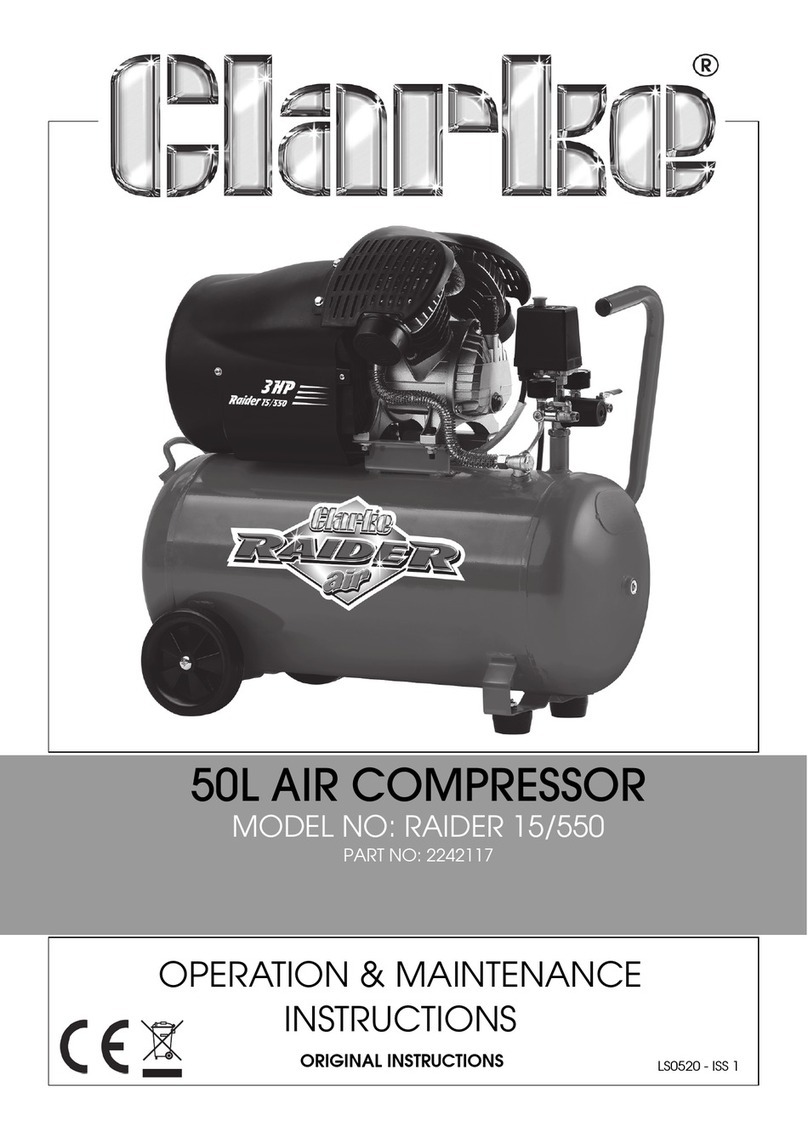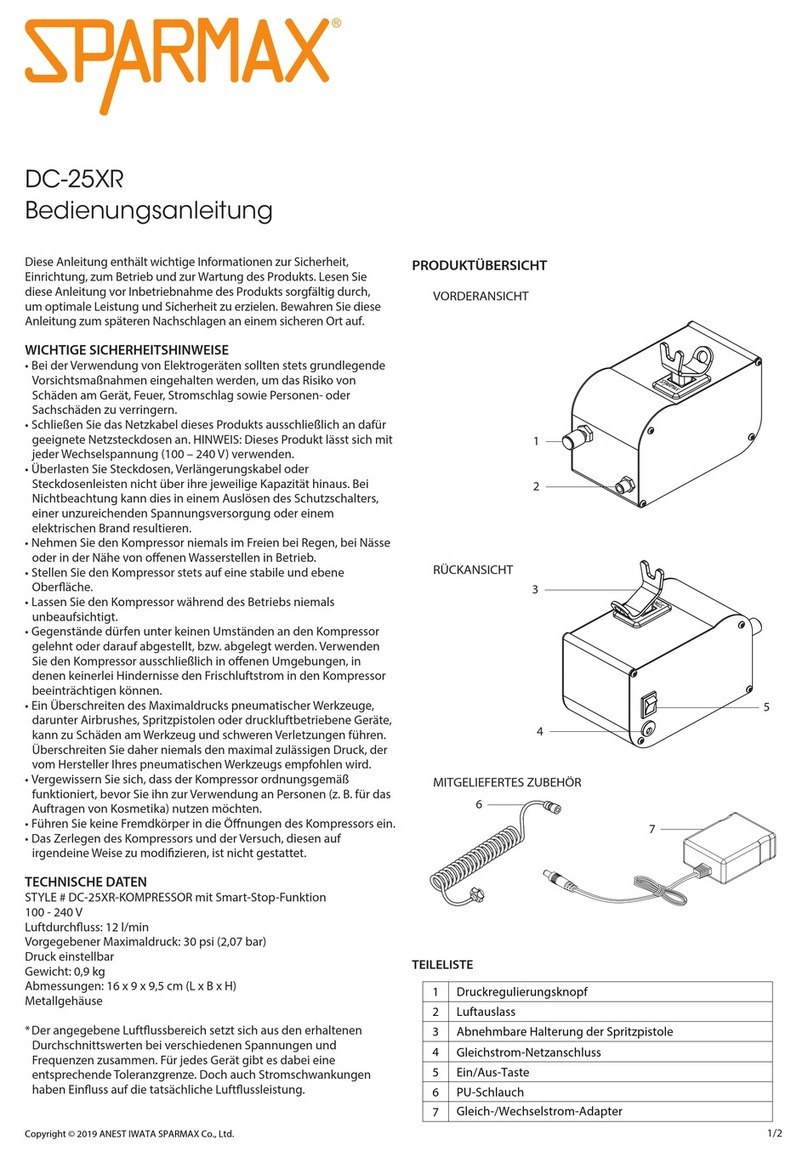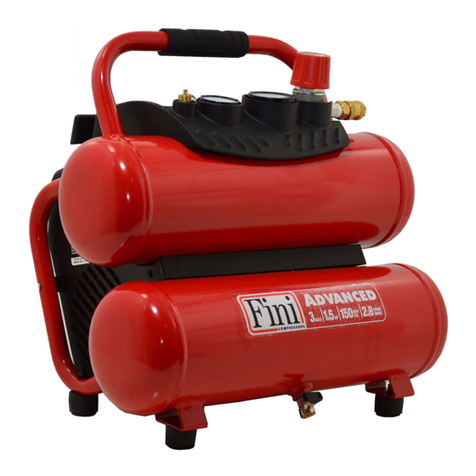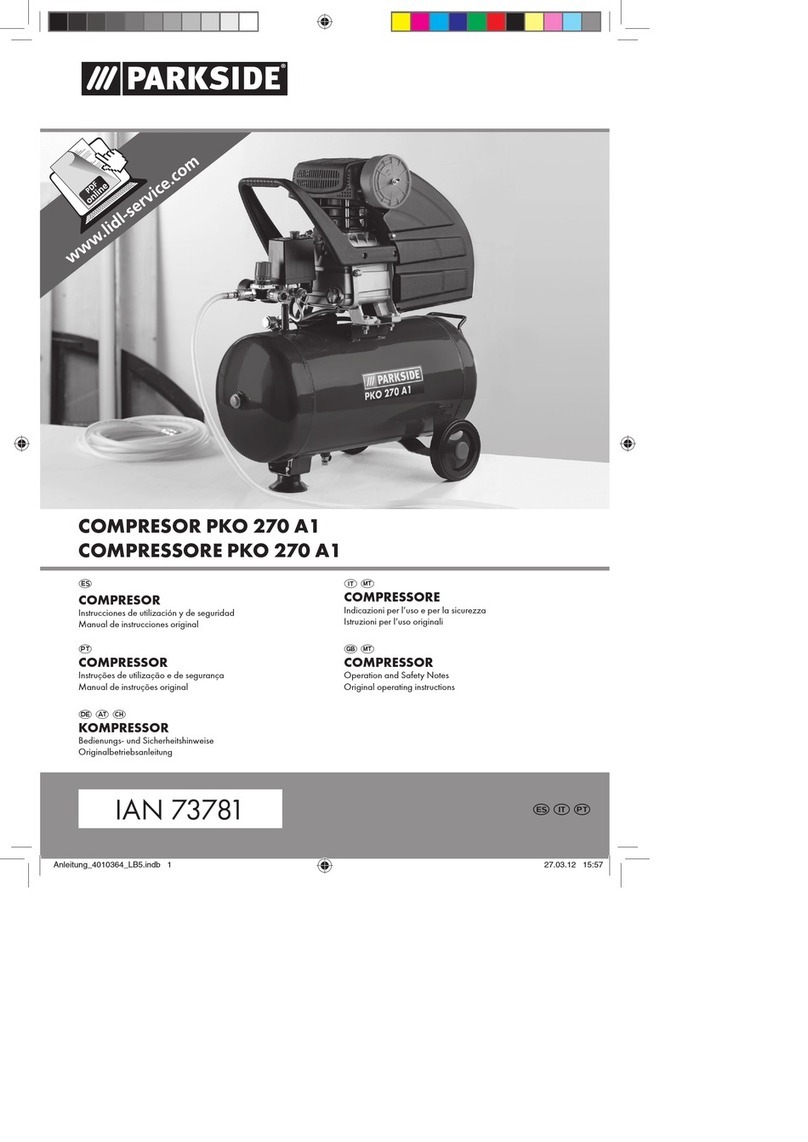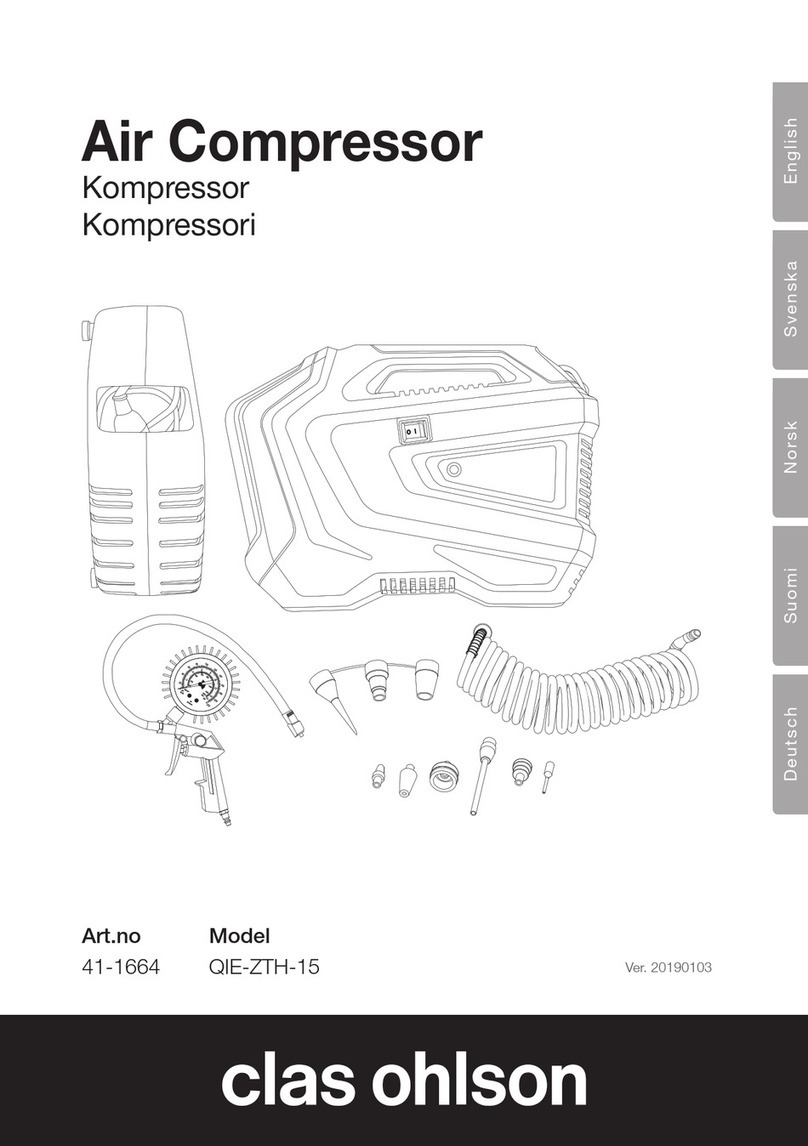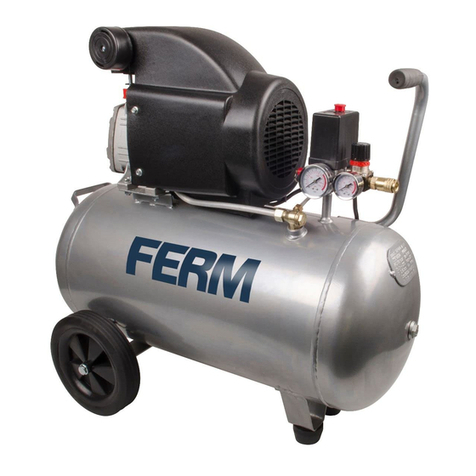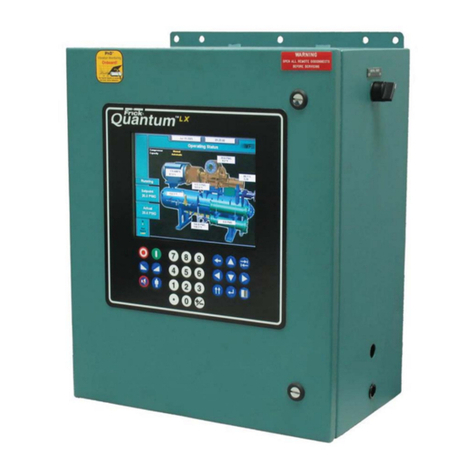
INDEX
NOTE: Numbers preceding dash are Section Numbers –Numbers following dash are Page Numbers
Air Control Components ..........................................4-2
Air Cooled Unit installation .......................................2.l
Air Filter Element Liie................................................6.2
Air Filter Element Servicing instructions ..................6-l
AIR FILTER (SECTION 6) .........................................6-1
Air Flow Quantity. .....................................................2-l
Air/Oil Flow Diagram .................................................5.l
Auto Sentry S-Auto Lag Button ..............................4-3
Auto Sentry S-Auto Lead Button ............................4-3
Auto Sentry S-Constant Run Button ......................4-3
Auto Sentry S-Control Pad Diagram ......................4-8
Auto Sentry S-Hourmeter .......................................4.3
Auto Sentry S-Keypad ............................................4-3
Auto Sentry S-Lead-Lag operation ........................4-6
Auto Sentry S-Programming and Set-Up
Instructions ..........................................................4.4
Auto Sentry S-Stop/Reset Button ..........................4-3
Basic information ......................................................l.l
BELT DRIVE (SECTION 7) .......................................7-1
Blowdown Valve Control ..........................................4.2
Blowdown Valve Piping ............................................2.3
Cold Weather Operation ...........................................2.2
CONTROLS AND INSTRUMENTS (SECTION 4) ....4-1
Decals .......................................................................l.5
Discharge Service tine .............................................2.3
Electrical Wring ........................................................2.4
Enclosure .................................................................2.2
Error Messages -Definitions ....................................4-4
Filling Oil Resetvoir ..................................................5.3
Foundation ...............................................................2.l
GENERAL INFORMATION (SECTION 1) ................1-1
High Temperature Operation ..................................5-1
High Temperature Shutdown ...................................4.l
Inlet Line ..................................................................2.3
Inlet Valve Control ....................................................4.2
INSTALLATION (SECTION 2) .................................2-1
instruments ...............................................................4.2
LED -Change Air Filter .............................................4.4
LED -Change Separator ..........................................4.4
LED -High NrTemperature .....................................4.3
LED -Motor Overload ...............................................4.3
Lifting Unit ................................................................2-1
Location ...................................................................2.l
Lubricant, Addition of Oil Between Changes ..........5-2
Lubricant, Changing Type of Oil..............................5-1
Lubricant, Draining and Cleaning System ...............5-3
Lubricant, Oil Specifications ....................................5-1
Lubricant Change Interval ........................................5-3
LUBRICATION, OIL COOLER, OIL FILTER &
SEPARATOR (SECTION 5) .................................5-1
MAINTENANCE SCHEDULE (SECTION 8) ............8-1
Minimum Pressure/Check Valve .............................4-2
Moisture in the Oil System ......................................5-3
Motor Lubrication ....................................................24
Motor Protection Devices .......................................4-1
Oil Cooler -Radiator Type .......................................5-4
Oil Filter.....................................................................5.4
Oil Level Gauge .......................................................5.3
Oil Reservoir .............................................................5.4
Oil Reservoir Drain ...................................................2-2
Oil Separator ............................................................5.5
Oil Separator -Pressure Differential Gauging .........5-5
Oil Separator -Removal ...........................................5-5
Oil System Check ................................................... 5-6
Operating Air Pressure Adjustment .........................4-6
Outline Drawings ...................................................... 1-2
Pressure and Temperature Digital Readouts ..........4-4
Prestart-Up instructions .................................?.........3-1
Protective Devices and Shutdown ..........................4-1
Regressing Interval ..................................................2.5
Relief Valve ...............................................................4.l
Safety Precautions .................................................. 1-4
Separator Differential Pressure Shutdown ..............4-1
STARTING &OPERATING PROCEDURES
(SECTION 3) .......................................................3.l
Starting The Unit, Cold .............................................3-2
Starting The Unit, Hot ...............................................3-2
Stopping The Unit ...................................................3.2
Subtractive Pilot .......................................................4.6
Thermostatic Mixing Valve ......................................5-4
TROUBLE SHOOTING (SECTION 9) .....................9-1
Wiring Diagram .........................................................4.9
13-8-609 Page ii
